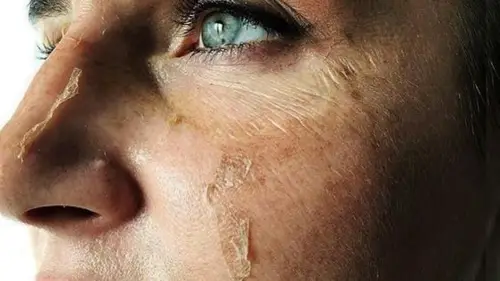What Is Chemical Peel?
Chemical peel is a cosmetic procedure that involves the application of a chemical solution to the skin to exfoliate and remove the outermost layers of dead and damaged skin cells. This process can help improve the appearance and texture of the skin, reducing the appearance of fine lines, wrinkles, acne scars, sun damage, and other imperfections.
Is Chemical Peeling A Good Choice For Face Peeling?
Chemical face peeling can be a good choice for skin peeling on face as it can effectively remove dead skin cells and improve the texture and appearance of the skin. However, it is important to note that chemical peeling may not be suitable for everyone and should only be performed by a qualified and experienced practitioner.

Chemical peels can be effective for improving skin concerns such as acne scars, hyperpigmentation, fine lines and wrinkles, and uneven skin texture. However, they may not be suitable for individuals with certain skin conditions, such as eczema or rosacea, and can also cause temporary side effects such as redness, swelling, and peeling.
Chemical peels can be effective for improving skin concerns such as acne scars, hyperpigmentation, fine lines and wrinkles, and uneven skin texture. However, they may not be suitable for individuals with certain skin conditions, such as eczema or rosacea, and can also cause temporary side effects such as redness, swelling, and peeling.
The Benefits of Chemical Peeling
The specific benefits of a chemical peel can vary depending on the type of peel used, the strength of the solution, and the individual’s skin type and concerns. What does a chemical peeling do is: a chemical peel removes the outermost layer of dead skin cells, which can improve the texture and tone of the skin. By removing this layer, a chemical peel can also help unclog pores and reduce the appearance of acne. Chemical face peels can stimulate collagen production, which can improve the overall health and appearance of the skin. Collagen is a protein that helps keep skin firm and smooth, but its production declines as we age. Chemical skin peeling for the face can help reduce the appearance of hyperpigmentation, such as age spots, sun damage, and melasma. Chemical peels can help reduce the appearance of fine lines and wrinkles by promoting collagen production and exfoliating dead skin cells. It also can help smooth the surface of the skin and improve its texture.
The specific benefits of a chemical peel can vary depending on the type of peel used, the strength of the solution, and the individual’s skin type and concerns. What does a chemical peeling do is: a chemical peel removes the outermost layer of dead skin cells, which can improve the texture and tone of the skin. By removing this layer, a chemical peel can also help unclog pores and reduce the appearance of acne. Chemical face peels can stimulate collagen production, which can improve the overall health and appearance of the skin. Collagen is a protein that helps keep skin firm and smooth, but its production declines as we age. Chemical skin peeling for the face can help reduce the appearance of hyperpigmentation, such as age spots, sun damage, and melasma. Chemical peels can help reduce the appearance of fine lines and wrinkles by promoting collagen production and exfoliating dead skin cells. It also can help smooth the surface of the skin and improve its texture.
Chemical peel for face work by applying a chemical solution to the skin, which causes the top layer of skin to peel off. Chemical peels can be performed at different depths, ranging from superficial peels that only remove the outermost layer of the skin to deeper peels that penetrate deeper into the skin. The type of chemical used and the depth of the peel will depend on the individual’s skin type, the severity of the skin condition, and the desired outcome. Some common types of chemical peels include glycolic acid, salicylic acid, and trichloroacetic acid (TCA) peels.
Some common types of chemical peels include:
Alpha-hydroxy acid (AHA) peels: These superficial peels use glycolic or lactic acid to remove the outer layer of the skin, improving texture and reducing fine lines and wrinkles.
Beta-hydroxy acid (BHA) peels: These peels use salicylic acid to penetrate deeper into the skin and treat acne and oily skin.
Jessner’s peel: This medium-depth peel uses a combination of salicylic acid, lactic acid, and resorcinol to treat acne, reduce the appearance of fine lines and wrinkles, and improve skin texture.
Trichloroacetic acid (TCA) peel: This medium-depth peel penetrates deeper into the skin and can treat more severe skin conditions such as sun damage, fine lines, and wrinkles.
What Are The Types Of Chemical Peeling?
There are several different types of chemical peels, which vary in their depth of penetration and the type of chemical used. Here are some of the most common types of chemical peels:
Superficial peel: A superficial or “light” peel uses a mild acid, such as glycolic acid or salicylic acid, to remove the outermost layer of dead skin cells. This type of peel is the mildest and has little to no downtime. It can improve the texture and tone of the skin, reduce fine lines and wrinkles, and help clear up mild acne.
Medium peel: A medium-depth peel uses a stronger acid, such as trichloroacetic acid (TCA), to penetrate deeper into the skin and remove damaged cells. This type of peel can improve the appearance of more severe wrinkles, acne scars, and sun damage. It may require some downtime for the skin to heal and can cause redness, peeling, and temporary discoloration.

Deep peel: A deep peel uses a stronger acid, such as phenol, to deeply penetrate the skin and remove damaged cells. This type of peel can improve the appearance of deep wrinkles, severe sun damage, and scars. It requires the most downtime and can cause significant redness, peeling, and swelling.
Combination peel: A combination peel uses a combination of acids, such as glycolic acid and TCA, to achieve a customized peel for each individual. This type of peel can improve a variety of skin concerns, including wrinkles, acne, and hyperpigmentation.
Vi Peel, glycolic acid peel, and Cosmelan peel are also all different types of chemical peels that are used to exfoliate and rejuvenate the skin.
Vi Peel: The Vi Peel is a type of medium-depth peel that uses a combination of ingredients, including trichloroacetic acid (TCA), salicylic acid, and retinol, to exfoliate and improve the appearance of the skin. It can help reduce the appearance of fine lines, wrinkles, and hyperpigmentation, as well as improve skin tone and texture. It’s suitable for all skin types and can be used on the face, neck, chest, hands, and other areas of the body.
Glycolic acid peel: Glycolic acid is an alpha-hydroxy acid (AHA) that is used to exfoliate the skin and improve its texture and tone. Glycolic acid peels are superficial peels that use a solution containing glycolic acid to remove the outermost layer of dead skin cells. They can help reduce the appearance of fine lines, wrinkles, and acne scars, as well as improve skin texture and clarity. They’re suitable for all skin types and can be used on the face, neck, chest, and hands.
Cosmelan peel: The Cosmelan peel is a type of depigmentation peel that is designed to treat hyperpigmentation, such as melasma. It uses a combination of ingredients, including azelaic acid, kojic acid, and arbutin, to inhibit the production of melanin in the skin. The peel involves the application of a mask that is left on the skin for several hours, after which it is removed and the skin is treated with a post-peel cream. The Cosmelan peel is suitable for all skin types but may not be recommended for individuals with sensitive skin.

How Long Does Chemical Peel Last?
The duration of the results of a chemical peel can vary depending on several factors, such as the type of peel used, the strength of the solution, and the individual’s skin type and concerns. Generally, the results of a chemical peel can last anywhere from a few weeks to several months, depending on the depth of the peel and how well the individual takes care of their skin after the procedure. For example, a superficial peel may last a few weeks to a few months, while a medium-depth peel can last several months to a year. However, it’s important to note that the results of a chemical peel are not permanent, and regular maintenance treatments may be necessary to maintain the results. It’s also important to follow the aftercare instructions provided by the practitioner to ensure the best possible outcome and minimize the risk of complications.
Chemical peels are generally safe when performed by a qualified and experienced practitioner, but they may cause temporary side effects such as redness, swelling, and peeling. It’s important to follow proper aftercare instructions to ensure proper healing and minimize the risk of complications.
There are places that do this in Turkey and in Istanbul. It is important to note that the work should be done by experts. In Touch Beauty clinic, this process is performed by our experts.
